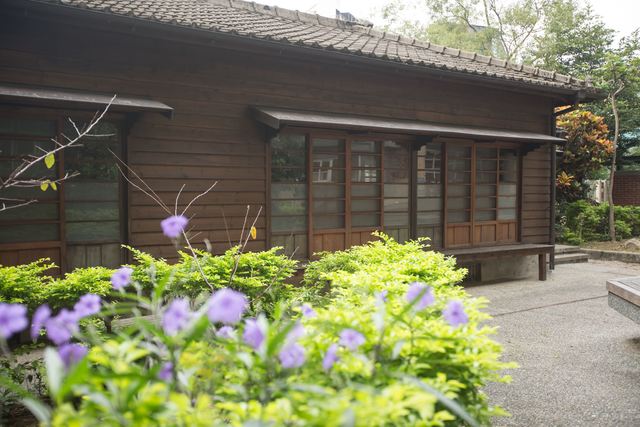Xinjie Elementary School Japanese Dormitory Group Introduction
In the bustling Yanping Road of Zhongli, the "Renhai Temple," which has over a century of history, is always full of worshippers, attracting many devotees to come and pay their respects. In addition to the historical temple, the cultural landscape in the city is also quite rich. The "Japanese Dormitory" located within Xinjie Elementary School has become the first historical building situated on a school campus in Taoyuan after renovation. With its surrounding rich historical and cultural sights, Zhongli offers not only Hakka customs but also a chance for a light journey to explore historical elegance and local culture. Entering Xinjie Elementary School, behind the newly built Chaoyang Building on the north side, there stands an old wooden Japanese-style building that captures the attention of passersby with its nostalgic and simple Japanese aesthetic. Built in the ninth year of the Shōwa era (1934), this Japanese dormitory was originally used as accommodation for faculty and staff during the Japanese colonial period. Later, during the reconstruction of Xinjie Elementary School in 2003, this over eighty-year-old Japanese house was discovered. Due to its well-preserved condition and historical value, it was submitted by the Taoyuan Cultural Bureau to the Council for Cultural Affairs, and in 2004 it was approved for registration as a historic building. Restoration began in 2005 and took four years to complete. The quaint historical charm has led many visiting tourists to pause for photos and enjoy a moment of leisure in the open corridor in front of the dormitory, savoring a relaxing time away from the hustle of daily life. Currently, the Japanese dormitory is a single-story wooden structure, featuring a slanted roof that adds varied height to the building, covered with dark gray cement tiles that enhance its Japanese character. There are courtyards both in front and behind the dormitory, reflecting the grandeur of the past. The exterior walls are also well-preserved, and the floor and foundation have been raised approximately sixty centimeters. The elevated flooring not only allows for air circulation to prevent moisture but also forms an open corridor where visitors can sit and experience the ambiance of traditional Japanese living. This space is arranged quite elegantly, making a visit not only pleasant but also inviting visitors to sit in any corner of the house, each having a strong Japanese flavor. Along with the greenery adorning the pathway beside the dormitory, it encourages tourists to linger here. In spring, it transforms into a cherry blossom secret spot, away from the crowds, providing a unique sakura experience. Additionally, within the campus, there are explanation plaques for the Japanese dormitory, a wooden plank road in the time corridor, ecological landscape water pools, and nearby tourist attraction guides, all designed as spaces for community arts and educational activities, making this quaint old house part of everyday life rather than feeling distant. If visitors have come to Xinjie Elementary School, they might as well take a short walk to explore nearby attractions such as Shengji Pavilion, Renhai Temple, Jiangxia Hall, Yuanhua Garden, and Yishi Hall, enriching their journey through the city with cultural atmosphere.






































